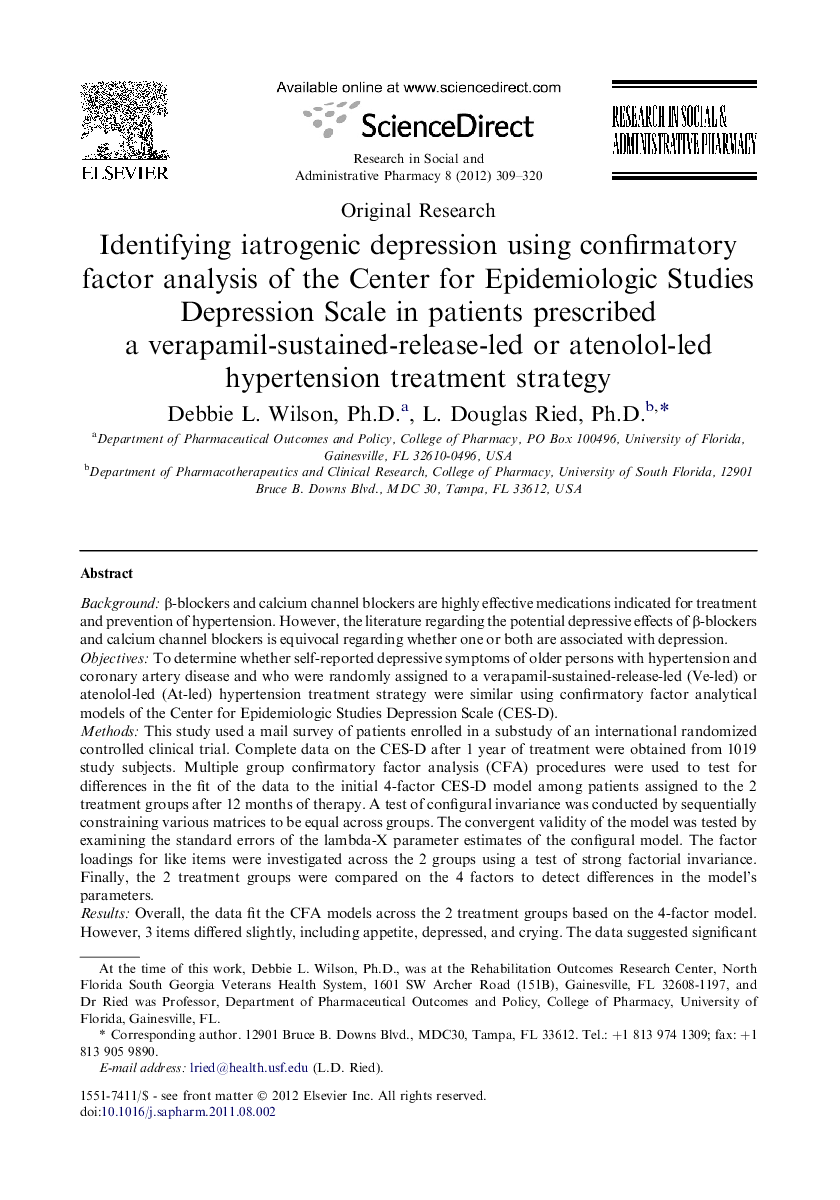| Article ID | Journal | Published Year | Pages | File Type |
|---|---|---|---|---|
| 2508958 | Research in Social and Administrative Pharmacy | 2012 | 12 Pages |
Backgroundβ-blockers and calcium channel blockers are highly effective medications indicated for treatment and prevention of hypertension. However, the literature regarding the potential depressive effects of β-blockers and calcium channel blockers is equivocal regarding whether one or both are associated with depression.ObjectivesTo determine whether self-reported depressive symptoms of older persons with hypertension and coronary artery disease and who were randomly assigned to a verapamil-sustained-release-led (Ve-led) or atenolol-led (At-led) hypertension treatment strategy were similar using confirmatory factor analytical models of the Center for Epidemiologic Studies Depression Scale (CES-D).MethodsThis study used a mail survey of patients enrolled in a substudy of an international randomized controlled clinical trial. Complete data on the CES-D after 1 year of treatment were obtained from 1019 study subjects. Multiple group confirmatory factor analysis (CFA) procedures were used to test for differences in the fit of the data to the initial 4-factor CES-D model among patients assigned to the 2 treatment groups after 12 months of therapy. A test of configural invariance was conducted by sequentially constraining various matrices to be equal across groups. The convergent validity of the model was tested by examining the standard errors of the lambda-X parameter estimates of the configural model. The factor loadings for like items were investigated across the 2 groups using a test of strong factorial invariance. Finally, the 2 treatment groups were compared on the 4 factors to detect differences in the model's parameters.ResultsOverall, the data fit the CFA models across the 2 treatment groups based on the 4-factor model. However, 3 items differed slightly, including appetite, depressed, and crying. The data suggested significant differences across groups on the positive affect, interpersonal relations, and somatic and retarded activity latent variables.ConclusionsThe domains indicating less happiness and more depressive symptoms were most likely to be unfavorably impacted by the At-led treatment strategy. Given a choice between these equally effective high blood pressure treatment strategies, it may be prudent to use the Ve-led strategy. This is especially true if the risk of the occurrence of a mood-related side effect of the β-blocker outweighs its other benefits in comparison.
